

PORTUGAL
Sintra & Cascais
Where I Stayed: Day Trip From Lisbon
What I Did: Sintra National Palace, Pena Palace, Cabo da Roca, Beach
I signed up to do yet another Viator tour to Sintra and Cascais. After meeting our Guide, we drove down Liberty Street, the widest street in Lisbon and one of the ‘richest’ in the world. We drove pass the Roman-esque aqueduct and the “lungs of Lisbon,” Montasano Forest. We continued through the small town of Amadora to get to Sintra. Along the streets of Sintra, you could easily see the Palacio de Pena and the Moorish Castle. The hill that the Palacio de Pena sits upon was called the ‘Moon Hill’ during the Neolithic period due to moon worshiping and is still known to have mystical characteristics. The Palacio de Pena is 500 meters high and is the highest point in Lisbon and all of the surrounding areas.
The Palacio de Pena is a fine example of the nineteenth century Portuguese Romanticism and the integration of natural and built heritage. The Palace is surrounded by 80 acres of forests where trees from all over the world have been brought to seek refuge. Among the 80 acres of forests lie the Gardens of Camellias, Grotto of the Monks, stables, the Countess’s Fernery, greenhouses, Garden of Azaleas, Valley of the Lakes where five lakes merge and flow all throughout the land, and so much more. My favorite aspect of the Palace was the symbolism of the relationship and importance of the merging of the sea and the land. This was shown through statues of King Triton, God of the Sea, coral, clams, and mermaids (my favorite). The colorful red, yellow and purple exterior along with the Arabian arches only added to the romantic feel of the Palacio de Pena.
Next, we headed to the streets of Sintra and enjoyed the village that houses the UNESCO World Heritage Site- the Sintra National Palace. This palace is a medieval royal palace that was occupied from the 15th to 19th century. We also checked out the local fare with tastes of aqueijada and travesseiro, two amazingly delicious traditional pastries.
On the way to our next destination, Cabo da Roca, the westernmost point of continental Europe, we drove through a town called Colares, known as the wine village, and discovered where corks come from- the Quercus Suber tree. Fun Fact: Portugal is responsible for supplying 54% of the worlds corks and Nasa is actually using this material to protect coms on satellites in space! So cool, right? Cabo da Roca was stunning. It is located within the Sintra-Cascais Natural Park and not only is it the westernmost point of Europe, which I’ve already stated, but it’s where the cold winds from the North meet the hot winds from the South, so it is WINDY! The jagged cliffs, protruding rocks and steep drops make this location quite intimidating and is responsible for many deaths. However, you cannot let that affect the overwhelming beauty that is Cabo da Roca. I sat on a rock on the perimeter of the cliffs and dangled my feet over the edge, while gusting forces of wind blew all over me- what an adrenaline rush- Mom, if you’re reading this, I’m sorry (love you)! At the tourism building next to lighthouse that sits on the coast, you can get a lovely certificate stating your name and the date that you attempted this daring feat- not really daring at all if you stay within the boundaries (and those who know me, know I don’t like boundaries).
After Cabo da Roca we briefly visited Guincho Beach where ‘surfers shred the gnar’ and there’s no shortage of people kitesurfing and windsurfing. We cruised by what is called Hell’s Mouth or the ‘Boca do Inferno’, a bay surrounded by huge rocks with large crashing waves. We then drove along the coastline to the city of Cascais by the bay. In the former fishing town, that later became known as “the city of spies” during the second World War, we walked the narrow streets, the harbor and marina and took a dip in the Atlantic Ocean, which was no doubt frightfully cold!
This concluded our tour and we headed back along the coastal road to Lisbon! What an amazing day!
São Miguel- Azores Island
Where I Stayed: Vintage Place-Azorean Guest House
What I did: Hiked, Thermal Baths, Lookouts (Miradouro), Gardens, Beaches, Scooter'd the Whole Island
'Bon Dia’ is an understatement when it comes to explaining the experience I had on the Azores island of São Miguel. São Miguel is part of the Portuguese archipelago of the Azores and is referred to as the “green island.” Some people say that the island of São Miguel is located halfway between continental Europe and Boston somewhere in the middle of the Atlantic Ocean. I flew into Ponta Delgada, the largest municipality of all the Azores region in Portugal. As soon as I reached the guest house there was a scooter waiting for me and ‘Sunday Funday’ was due to commence. A scooter is definitely the best way to take in the sites of this spectacular island- however, it deos require a bit of kahonas with the crazy local drivers!
The first stop on my list was the Sete Cidades Massif that occupies the extreme western part of São Miguel and corresponds to a central volcanic crater and lake-filled caldera (large cauldron-like volcanic depression). There are three different calderas in the Sete Cidades that are each associated with explosive eruptions. To see all three of these at once, you have to do a little bit of a hike up to the Lagoa do Canário Miradouro- which you can follow in the pictures to the right! The view is absolutely remarkable and the hike totally worth it in order to view the massif and twin lakes.
Next, I drove to the complete other side of the island, to the East, to Vila De Nordeste. Here there is a beautiful waterfall, Ribeira dos Caldeirõs, where I stopped to read a bit while taking in the sites. I made my way down to Miradouro da Ponta do Sossego, a lovely park and garden area where I had lunch and gawked at the iconic viewpoints. The gardened area covers 13,000m distributed in terraces located at different altitudes. The coastline view from here is supposed to be one of the best of the entire island.
After a relaxing lunch, I headed to a beach called Praia dos Pelames, halfway between Nordeste and my next destination Furnas. With rock formations, the action of the waves and black sand, this was definitely a fun stop.
Furnas is located in the municipality of Povoação and is historic for its active volcanic complex. It consists of two main calderas and hot springs located in the center of the village. The tradition in Furnas is to use these hot volcanic complex’s as grills- placing the food on something similar to a baking sheet and letting the volcanic geysers cook the food in front of you. A restaurant called Tony’s takes a whopping 6 hours to prepare the food and serves it fresh daily. What a great experience! I was feeling quite full after my freshly prepared meal of seasonal vegetables and blood sausage so, I headed to Poca da Dona Beija.
Poca da Dona Beija is known as the Paradise Pools, Youth Pools or Well Water and is a complex of five different thermal areas/baths with therapeutic benefits. Located in an area surrounded on both sides of a stream called Ribeira dos Lameiros, this thermal water sprang and enriched the ground for the plantation of the famous tarot root for which Furnas is known for. Below is information taken from the Poca da Dona Beija website about the five thermals:
Stream
A leisure area that is almost a metre deep, made accessible by the installation of a moveable floodgate that blends thermal and stream water, which results in a temperature of around 28ºC (82ºF), making it ideal for people who want to cool down. Depending on weather conditions the floodgate may be removed for safety reasons, making it unavailable for bathing.
Serenity
A shallow thermal area, ideal for children, with two fountains located on the surrounding stone walls that allow visitors to enjoy a water massage whilst sitting. On the side wall there is a submerged bench that allows users to enjoy the silent passage of thermal waters that flow into the stream.
Mystic
This thermal area features a space behind a water curtain wherein the visitors can experience an open air sauna or a light water massage by leaning forward. The result of the wind playing with the thermal water, fills this space with special sounds.
Thermal Gathering
This space was created for socializing with relatives and friends. Two different depths (30 cm and 60 cm) are available to relax comfortably in the thermal waters, making it a cozy and leisure area to be enjoyed by children and adults alike. Due to the fact that this is the highest bathing area, the user has a privileged panoramic view of the stream, which is enhanced by the lights at dusk, highlighting the surrounding vegetation.
Meditation
The deepest thermal area of Poça has two water fountains with a high level of pressure permitting a natural and rejuvenating water massage. This area has a wavy, ergonomic wall which allows relaxation whilst you are totally immersed in the thermal waters, enjoying the view of the stream and taro root plantation.
This was a full day of adventure that called for an early night!
The next day I ventured to a town called Vila Franca do Campo which houses a marina with transfer to the Vila Franca islet known as ‘Ilheu de Vila Franca’. Ilheu de Vila Franca is a small volcanic island about 500 meters from the coast and was dismantled by sea erosion and tectonic movements making for the perfect beach and snorkeling spot. It is semicircular in shape and has an opening through which the sea penetrates the crater. When the boat arrives at the islet, you literally have to jump on to the concrete slab beside the boat because there are no stairs. There is a tiny beach within the islet, however, for sun-bathing you need to climb the rocks and find a cozy space to lay out your towel. I stayed here for quite some time and snorkeled until last call for the ferry.
After the islet, I found my way to Lagoa do Fogo, aka Lagoon of Fire, a crater lake that you can actually swim in- so, of course, I took a dip before going home. It is the largest of the water-bodies in the Azores and is surrounded by forests and plenitful vegetation.
My experience on the Azores Island of São Miguel was amazing and I felt a bit closer to home being in the middle of the Atlantic!
Lisbon & Belém
Where I Stayed: Good Morning Hosel
What I Did: Tours, Pub-crawl, Seven Hills, Cruise
Lisbon & Belem-
According to the legend, Lisbon was built upon seven hills, so the first thing I did was take a Lisbon Seven Hills Electric Bike Viator Tour. We started by cruising along Lisbon’s cobblestone streets learning about the cities secrets and lores while discovering hidden gems in the Alfama, Chiado and Bairro Alto districts. We climbed to São Vicente Monastery and visited the rooftop for spectacular views of the Tagus River while experiencing ‘cycling serenity’ in São Miguel and Eduardo VII Park. We admired the stunning architecture of the oldest church in Lisbon, Sé de Lisboa Cathedral and continued to explore the rich culture and fascinating heritage of the city using our interactive map.
One of the days was spent in the town of Belém, derived from the word Bethlehem, which is its own historic parish. The first stop in Belém was the Mosteiro dos Jerónimos which symbolizes the Portuguese Age of Discovery, along with the Torre de Belém and the Padrão dos Descobrimentos. The monastery is one of the most prominent examples of the late Gothic Manueline style of architecture in Portugal where monks of the military-religious Order of Christ provided assistance to seafarers in transit. It was a spectacular sight to see! Before I went to the Torre de Belém, I had to make a stop to the famous Pastel de Nata de Belém Bakery to try the infamous Portuguese egg tart pastry ‘pastéis de nata’ - where it all started! I could possibly be addicted and should have never indulged in all the goodness of this pastry delight.
Torre de Belém was the next stop. The Belém Tower or the Tower of St. Vincent is a fortified tower that played a significant role in the Portuguese maritime discoveries and stood as the defense system for the mouth of the Tagus River. During the 1831 Liberal Wars, this tower exchanged fire with French ships at the Battle of the Tagus. The tower is isolated along the riverbank and belongs to the geomorphological volcanic complex of Lisboa-Mafra. Torre de Belém is built from a beige-white limestone local to the Lisbon area called lioz and is quite sleek and stunning.
A short way down the Tagus river to the North is Padrão dos Descobrimentos. This monument is where ships departed in order to trade with India and Orient and acted as the temporary beacon during the Portuguese World Fair. The view from the top of the Padrão dos Descobrimentos is gorgeous; you can see the whole town of Belém, the April Bridge, and the coastal views of Lisbon. Because of this view, I decided to walk back to central Lisbon along the coast to the Terreiro do Paço plaza.
From the Terreiro do Paço I decided to sign up for the YellowBoat Lisbon Sightseeing Cruise Tours so that I could experience the sights that I saw earlier in the day from the Tagus River. The YellowBoat Tour gave me an unforgettable trip through the Tagus River with a unique view of Lisbon and the famous seven hills. We also stopped for a brief minute in the city of Cacilhas near to the Cristo Rei and the April 25th Bridge.
Also, to enjoy the BEST Pasteis de Nata in Portugal, visiting Fábrica da Nata is an absolute must!

National Palace of Sintra
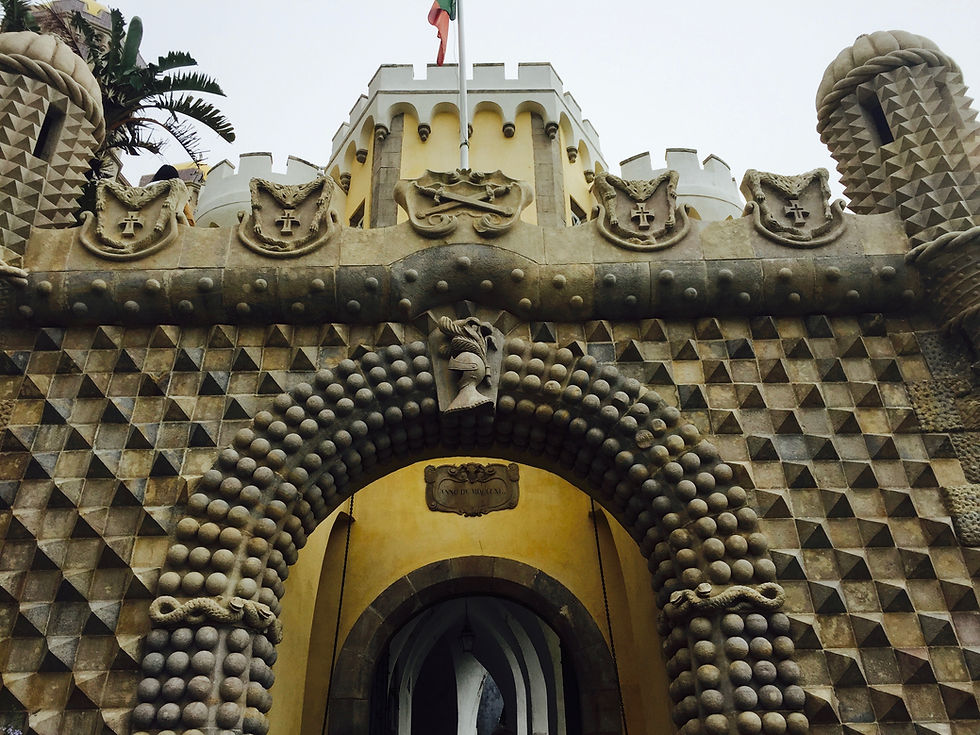
Palacio de Pena- Entrance

Palacio de Pena

Palacio de Pena

King Triton Statue- Palacio de Pena

King Triton Statue- Palacio de Pena

Palacio de Pena

Palacio de Pena

Palacio de Pena

Moorish Castle- Sintra

Cabo da Roca

Cabo de Roca

Guincho Beach

Cascais

Sete Cidades

Sete Cidades

Sete Cidades

Sete Cidades

Sete Cidades

Sete Cidades

Sete Cidades

Sete Cidades

Sete Cidades

Sete Cidades

Lagoa do Canário Miradouro

Lagoa do Canário Miradouro

Lagoa do Canário Miradouro

Lagoa do Canário Miradouro

Lagoa do Canário Miradouro

 |
|---|
 |
 |
 |
 |
 |

Furnas Caldera
 Poça do Dona Beija |
|---|
 Poça do Dona Beija |
 Poça do Dona Beija |

Ilhéu de Vila Franco

Ilhéu de Vila Franco

Ilhéu de Vila Franco

Ilhéu de Vila Franco

Lagoa de Fogo

Lagoa de Fogo
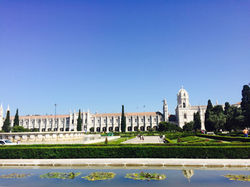 |
|---|
 |
 |
 |
 |
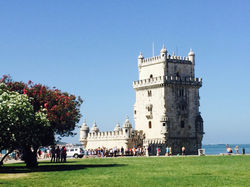 |
 |
 |
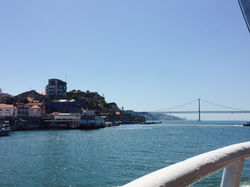 |
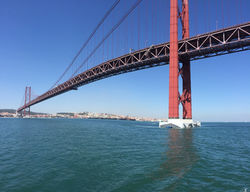 |
 |
 |
 |
 |
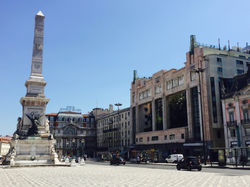 |
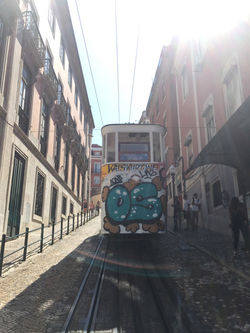 |
 |
Sesimbra & Arrábida National Park
Where I Stayed: Road Trip from Lisboa
What I Did: National Park, Beach, Road Tripped
I rented a car for a day of road tripping. My new-found friend, Sigrid, joined me and we headed away from Lisbon across the 25th of April Bridge, Ponte 25 de Abril. This bridge connects the city of Lisbon to Alameda on the left of the Tejo River and is often compared to the Golden Gate Bridge in San Francisco. The Ponte 25 de Abril is the largest suspension bridge in the world and commemorates the Carnation Revolution and the end of an authoritarian dictatorship in Portugal. At the other end of the bridge stands the Christ the King, Cristo Rei, National Sanctuary. Cristo Rei is a catholic monument and shrine that is dedicated to the Sacred Heart of Jesus Christ and overlooks the City of Lisbon in Central Portugal. It was inspired by the Christ the Redeemer statue in Rio de Janerio, Brazil and from this location an amazing view of the Ponte 25 de Abril bridge and the city of Lisbon is absolutely breathtaking. You can take the elevator to the very top of this statue for an even better look at the view.
We cruised for about an hour toward the beautiful cliffs of Cabo Espichel. Here, we snapped some clifftop panoramic shots of the stunning coastline and toured the Santuário de Nossa Senhora do Cabo Espichel, a 600-year-old religious sight, where pilgrims gathered to honor Our Lady of the Cape. Next, we headed towards the direction of Zambujal to see the famous dinosaur footsteps, which wasn’t really that impressive to be honest; so we headed East to the fishing village of Sesimbra. Seseimbra is located in a bay with calm seas and places for us to walk along the breakwater near the beach while observing the fishermen haul in the day’s fresh catches.
Next we headed to the famous Arrábida National Park where we climbed to the top of the ridge and viewed the incredible landscape presented in front of us. To the North we were able to see the entire city of Lisbon, the mountains of S. Luís, S. Francisco, Louro and Gaiteiros. To the South, the crystal clear blue sea, the islets, the Tróia Peninsula and the city of Setúbal. We climbed down through Portinho da Arrábida, and ended up at Praia dos Coelhos (Rabbits’ Beach), a hidden golden paradisiacal beach with crystal clear water and white sand in the mouth of the river Sado and surrounded by jetting cliffs- it was absolutely amazing.
Lagos & Portimão
Where I Stayed: Lagos Guesthouse Marina
What I Did: Beaches, Grotto Tours, Marina
Lagos, situated in the Algarve region, has some of the most beautiful beaches in the world. The first thing I did in Lagos was to take a grotto tour and observe the geography from the sea. The rock formations are among some of the most unique in the world and also have some cute names - for example, there is the love cave, garage, elephant, museum, cathedral, living room and lighthouse. After the grotto tour, I tackled the Avenida dos Descobrimentos and did some shopping and had some gelato. There are tons of markets along this avenue and anything you need, and want, can be found here.
One day I took the trolley all the way up to the Ponta da Piedade, the mercy point, which is quite possibly one of the most beautiful natural features of the Algarve coastline. The shoreline is formed of heavily weathered cliffs that have been carved into rock pillars, natural tunnels and hidden grottos. ‘The sandstone cliffs of misshaped angels stand at stark contrast to the deep turquoises and greens of the calm seas.’ It is at the southern end of Lagos Bay where you can reach the base by climbing down a flight of 182 steps. The view is stunning.
Near the Ponta da Piedade lie Praia de Camilo and Praia da Dona Ana. The Praia de Camilo consists of picturesque cliffs and rock formations that are absolutely magnificent. There are several flights of stairs that you have to climb down and then back up, however, the view is definitely worth it. You can swim out a few yards to a cliff that juts out from the middle of the ocean where, if you’re brave enough, you can climb then cliff jump into the warm crystal clear water. Since this beach is the closest to the Ponta da Piedade, there are restaurants with freshly caught seafood that you can enjoy throughout the day.
Praia da Dona Ana was without a doubt my favorite! This beach is embraced by cliffs so there is little to no sea breeze and only sunrays and golden sand. The cleanliness and calmness of this beach just adds to the location with nearby shops and cafes. Another beach I visited was the Meia Praia, which is the most famous of the Lagos beaches and by far the biggest. There are bars that line this vast beach and surfers that take advantage of the rolling waves. It is positioned next to the marina and if you don’t feel like walking all the way around the marina, there is a ferry you can take to the other side for just .60 euros.
The train to another Algarve city, Portimão, is only 18 minutes in duration- which I definitely had to take advantage of. Here I took a private Viator tour to the Benagil Caves and along the Algarve coastline. We started the trip in the historic harbor of Portimão and followed the Rio Arde, passing the village of Ferragudo and two medieval forts entering the Atlantic Ocean. We headed South-East, past the Ferragudo Lighthouse, the Beach of Caneiros, the Roman Tower and Smugglers Cave. Along the coastline of Carvoeiro we observed the rock formations of Algar Seco, Praia Vale de Centianes and up to the lighthouse of Alfanzia. Last but certainly not least, we arrived at the most exotic and remote beach in the world, the Benagil Caves. It was definitely an extraordinary experience and I would recommend it to any one visiting the Algarve Coast.

Ponte 25 de Abril

Ponte 25 de Abril

Cristo Rei

Cabo Espichel

Cabo Espichel

Sesimbra

Praia dos Coelhos

Praia dos Coelhos















